CASE STUDY
Microsoft Band
Health and fitness device
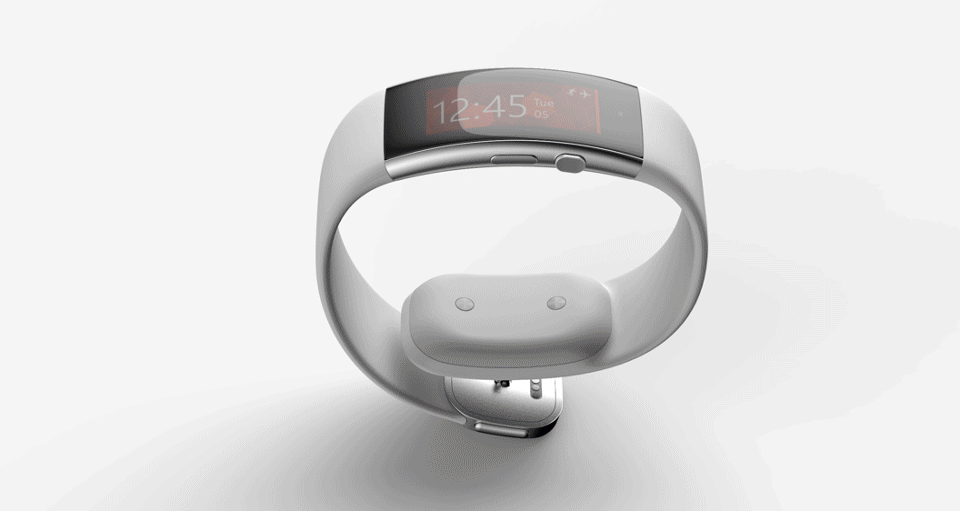
Overview
I was a key contributor on the Microsoft Devices Team who delivered two versions of the Microsoft Band health & fitness device which included the Microsoft Health mobile app. The roots of this product go back to product concepts our team were exploring years earlier. This team, in Microsoft Research, created and tested a variety of wearable technologies. Through extensive research and Design Thinking cycles, we validated a product opportunity—help busy office workers improve their physical and mental health by wearing sensor-filled arm band and participating in a health and wellness plan.
The product would use a variety of sensors to help people measure, track and optomize their day:
- Environment—Location and conditions around you.
- Movement—To try to understand your activity.
- Health metrics—To try to understand your physical state (health, stress, etc).
After wearing the device for several days, we'd have the data we'd need to provide health insights to the wearer and provide timely recommenations for improving their general health and wellness. These recommendations would include:
- Stress reduction tips
- Activity reminders
- Advice to get better sleep
- Weight loss advice and assistance
- UV/sun exposure warnings
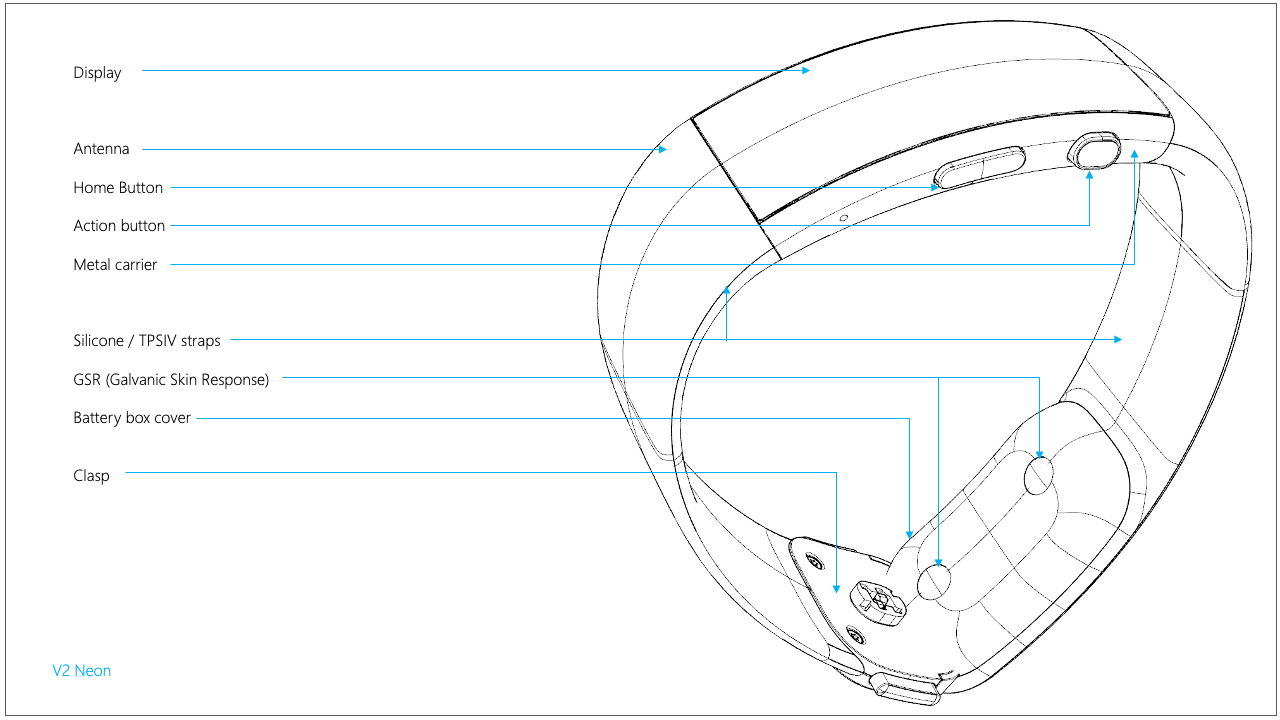
Market
At the time, customer research led us to the hypothesis that a significant group of customers would be interested in buying a wearable sensor and app experience if it significantly improved their overall health and wellness. They were searching for something between a smart watch and a simple single purpose step tracking device. Since there were limited devices of this type available, we had to do extensive foundational research on this form factor and potential customer expectations.
Customer
After considering a huge variety of customer segments who might benefit from awearable device, we determined the busy 'information worker' was the best fit for our technology. To further segment the audience, we identified a persona/customer segment we called: The Professional Quantified Self:
- A busy professional or information worker
- Technical in nature
- Relatively high income
- Interested in the latest gadgets
- An early adopter of technology
- An active smartphone user
Project goals
Our leadership set goals to bring to the US market a wearable device paired with a wellness program. Some constraints and requirements were:
- Validate that the device and experience meet the needs of our target audience measured in customer satisfaction metrics and user interviews
- Device needs to be under $300 suggested retail
- Pair with iPhone/Android/Windows Phone apps
- Integrate with the Microsoft health platform (HIPAA compliant) to store and interpret the data
- Open architecture for adding capabilities like new exercises
- Standard safety, compliance and brand standards apply
My role
For the Microsoft Band I was the lead hardware interaction designer. This meant I was ultimately responsible for these designs:
The Result
Microsoft Band Health and fitness device

Experience powered by machine learning
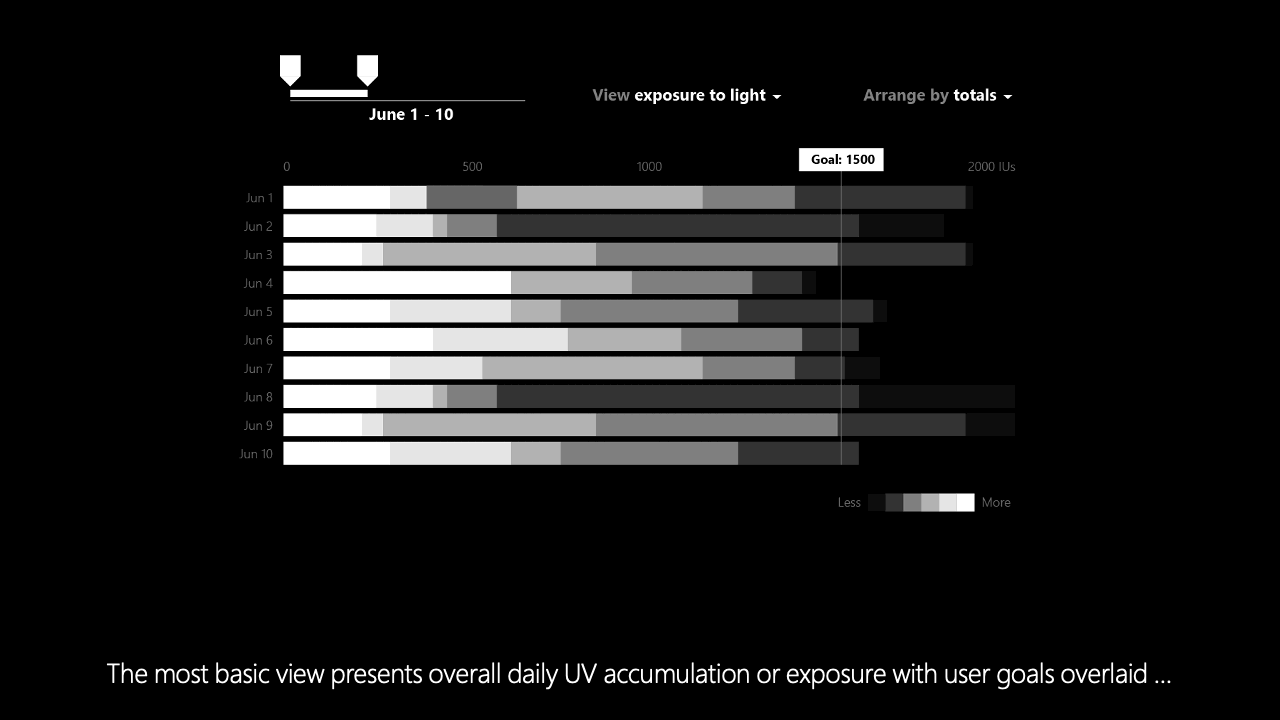
Device interface and interaction design
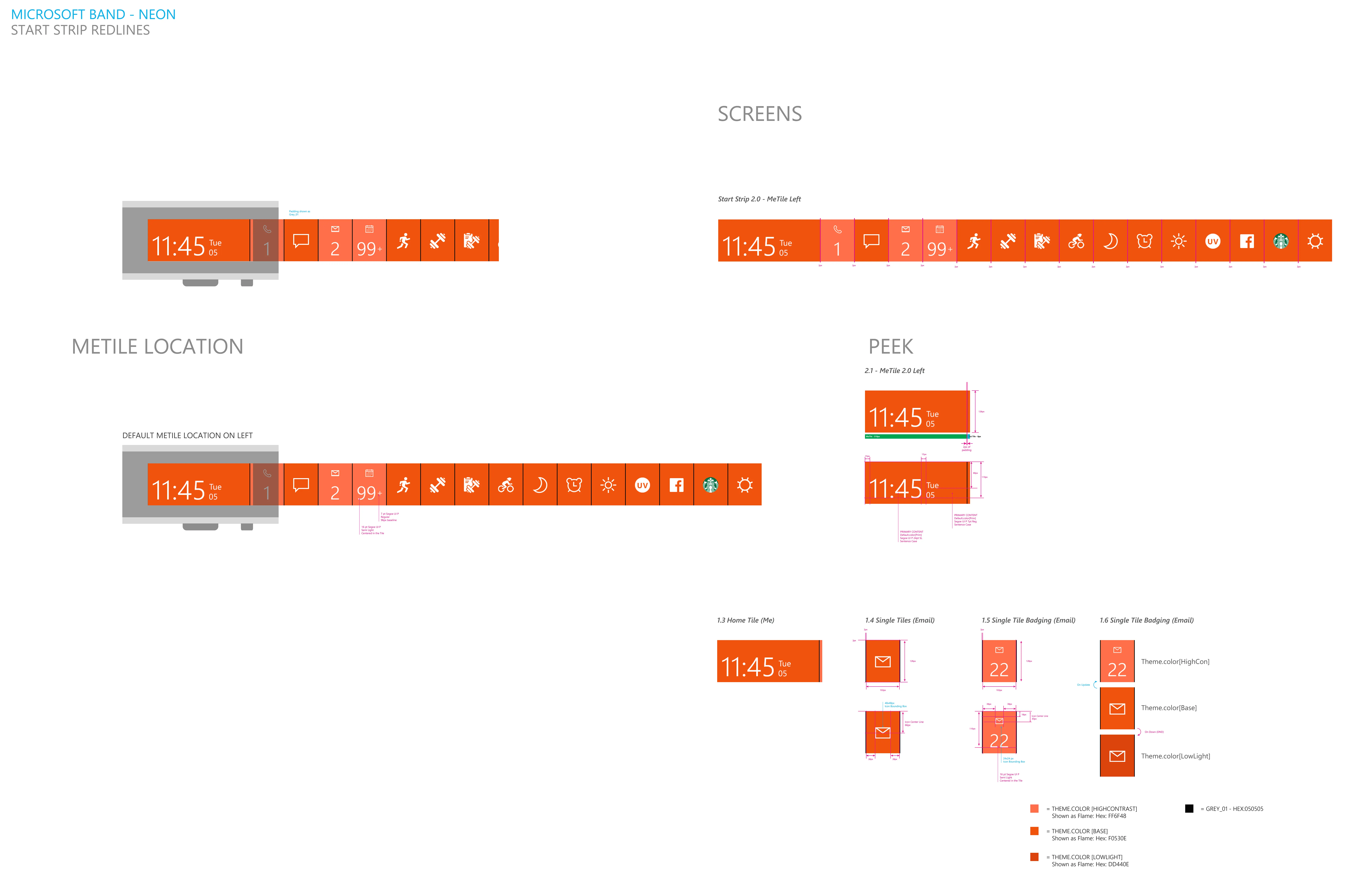
Settings UI
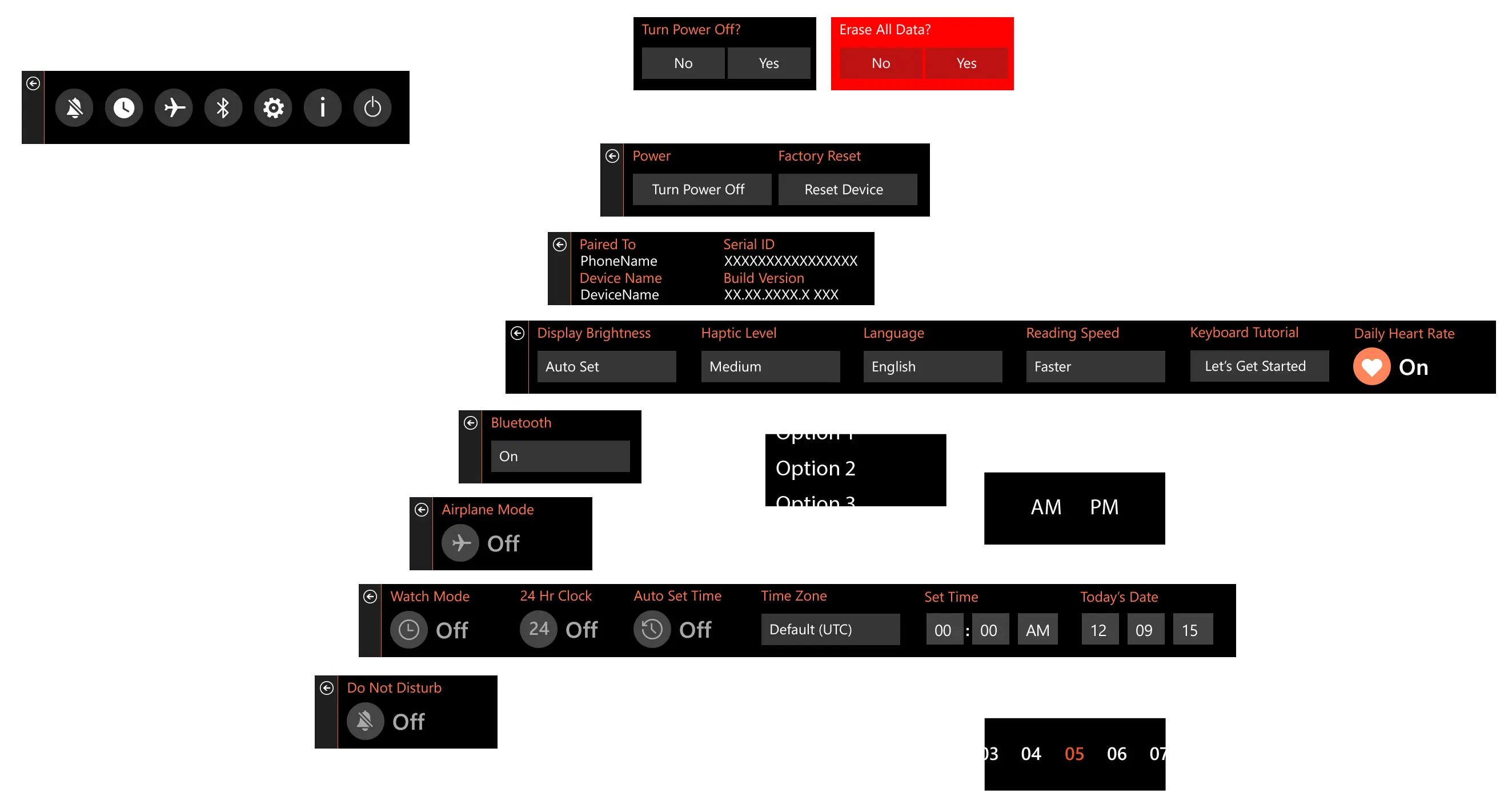
Microsoft Health App

Outcomes
Product reviews
There were many fans of the Microsoft Band and product reviews were genarally positive. However, there was consitent negative feedback related to the fit of the device. Having batteries and sensors integrated into the band turned out to be unpopular because the fit and comfort were compromized.
Customer satisfaction
For the core audience we designed for, we had quite a bit of success. Admittedly, this is a relatively small crowd by Microsoft standards, but we were very happy for the positive response. This was proven in customer interviews, surveys and by tracking several customer satisfaction metrics. And, although the MS Band wasn't a huge seller, we met most of our team goals. The fans of the band tended to be users of Microsoft products across the board, who were interested in the latest gadgets and technologies.
What we learned
In retrospect, I feel like Microsoft Band was a solid product that had a short product life primarily for three reasons:
- Wrong brand for a wearable device—For someone to actually wear a product, its branding is critical. I believe Apple has this place in our current market, but Microsoft frankly doesn't. Apple owned the watch space and competition would be tough.
- Fit is critical—Unfortunately, the band was rigid and a bit uncomfortable. If people don't wear it, it doesn't matter how smart and capable it is. After shipping version one, the data was clear—the most important ingredient to success of the product was fit. By the second version we were getting much better fit feedback, but we didn’t quite get to “comfortable”.
- Microsoft's priorities shifted—Band was born in an era of more, more, more at Microsoft. The company was engaged in a device arms race. The main question, who'll define the next big wave of technology? Since then, we've all realized that customers really don't want more technology...they want less (but better, smarter) technology. In recent years, most technology companies have shifted to solve for this reality.